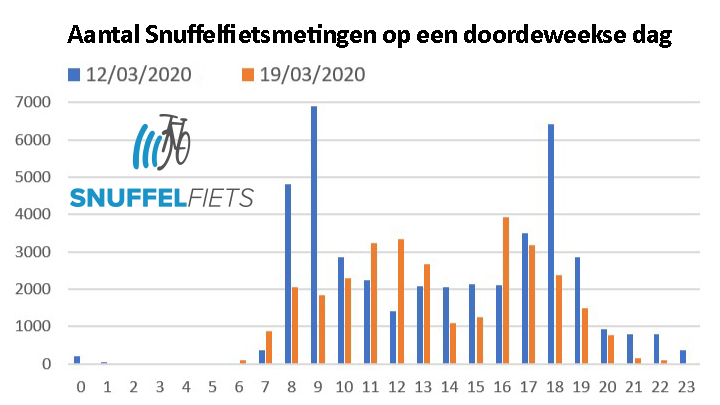The effects of corona measures on air quality and mobility
This past weekend, the KNMI released details about the air quality in the Netherlands due to corona measures. Satellite images from the KNMI show an enormous reduction in air pollution when compared with a week, with similar weather conditions in February last year.

When we look at mobility, we are also seeing changes taking place. In the Netherlands, 38% fewer kilometres were driven in a week (between 13 and 20 March) and traffic jams decreased by 99%.
Data from the Dutch Displacement Panel show that in the late afternoon on Thursday 19 March the figures were very different when compared to a regular Thursday. Around 16:00, 67% more people cycled, 57% more walked, 71% less used the public transport and 30% less travelled by car.
The fine dust emission around Utrecht on 5 March averaged between 9 and 30 µg/m3, while on 19 March it is between 0 and 12 µg/m3.

The measures also have a different effect on the Sniffer bike data. Since the COVID-19 measures started, the times at which people start cycling differ much more than on a regular day. People now cycle more around noon and around four o’clock.

Seeing improvements with the “sniffer” bike.
Mobycon and the B-ITS program have been involved in setting up the Sniffer bike program. The Snuffelfiets is a cooperation between the province of Utrecht, Civity, SODAQ and the RIVM, in which more than 500 cyclists have a sniff-sensor on their bicycle that calculates the particulate matter on the bicycle route. In addition to particulate matter, air quality also depends on nitrogen and weather conditions.
Read more in this full article by Mobycon

